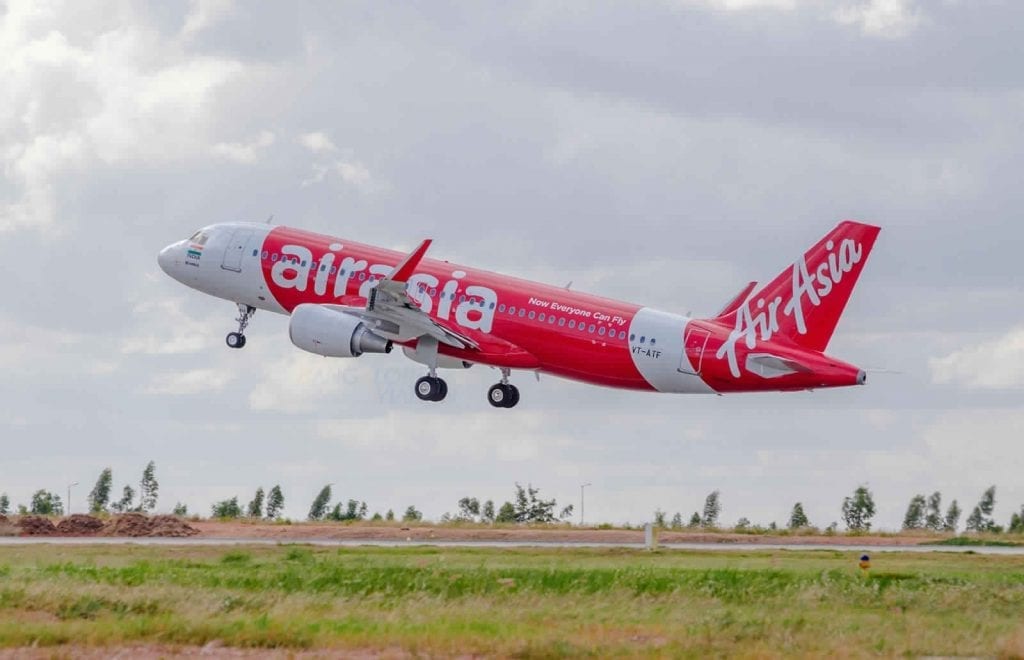
Low-cost carrier AirAsia India plans to add up to 70 aircraft to its fleet over the next 4-5 years as it seeks to aggressively expand services, domestic market share, and network, a top executive at the firm said in an interview.
“We are expanding aggressively and aiming to be among the top three in the low-cost carrier (LCC) segment once we have inducted 60-70 aircraft in our fleet,” AirAsia India chief executive Amar Abrol said.
The airline, a joint venture between Malaysia’s AirAsia Bhd and India’s Tata Sons, expects to double its revenue to Rs1,200 crore in 2017, and take it to Rs1,800 crore in 2018, Abrol added.
During the year ended 31 December 2016, the company narrowed its losses to Rs140.32 crore from Rs181.70 crore in the previous year, according to data available with the Registrar of Companies (RoC).
AirAsia India’s financial year starts from 1 January and it is yet to disclose numbers for the Indian operations during the year ended 31 December 2017.
A significant number of the 70 aircraft that the airline plans to add are likely to be purchased, while the rest will be leased. Like its parent AirAsia Bhd, AirAsia India has an all-Airbus fleet and will place the aircraft order through its parent to get favourable prices.
“All aircraft orders will be done at the group level, where commitments have been made to purchase aircraft from Airbus over a period of time,” Abrol said.
“We draw best practices from our parent, AirAsia Bhd, and also take advantage of economies of scale while placing orders for aircraft,” Abrol said, adding that there is a significant cost advantage with the parent, which already owns a significant fleet, negotiating with lessors and aircraft manufacturers for its subsidiary.
Abrol did not share any estimate of the investment the company plans to make on aircraft acquisition.
An industry expert who spoke on condition of anonymity pegged the size of AirAsia India’s order to Airbus at $3 billion.
For a no-frills airline like AirAsia India to reach the market leadership position, the company either needs to be the leader in the revenue segment or be the top company in keeping costs down—both are not in AirAsia’s favour right now, according to a sector analyst.
“The biggest challenge faced by AirAsia India is that they don’t have good slots at major Indian airports. As a result, they find it difficult to compete with bigger airlines in the no-frills space. They should aggressively expand their regional markets, as they could miss out on growth if they fail to get good slots at some of the major regional hubs. They also need to check their costs, as it is higher than some of its competitors and bring it down from the current levels. Otherwise the path for AirAsia India to break even is a difficult one,” the analyst said, requesting anonymity.
“Getting to profitability is absolutely essential for us but not at the cost of stalling expansion,” Abrol said. “We are investing heavily on people, infrastructure, aircraft, and expansion.” He expects AirAsia India to break even by January-March 2019.
A consultant said that he does not expect the airline to grow in double digits or even high single digits in 2018-19.
“Rising fuel prices are a huge challenge for airlines and are expected to affect low-cost carriers adversely. We don’t expect the airline to grow in double digits or high single digits in FY19,” Peeyush Naidu, partner, Deloitte Touche Tohmatsu India LLP, said.
AirAsia India has also expressed the intent to go for an initial public offering to meet its investment requirements. But, according to Abrol, the company has not appointed a banker to start the process and a decision to that effect will come from the board.
AirAsia India, which had a market share of 3.7% in 2017, up from 1.7% in 2015, carried 43.23 lakh passengers in calendar year 2017, according to Directorate General of Civil Aviation (DGCA) data.
The LLC segment in India was led by Interglobe Aviation-run IndiGo, which registered a 39.6% market share, and carried 4.64 crore passengers. Other no-frills airlines like SpiceJet (12.8%) and GoAir (9.1%) carried 41.12 lakh and 29.38 lakh passengers, respectively during the same period.

